The Teradek SERV Pro can be used to solve a very common problem. Often I work on documentaries and corporate shoots as a solo shooter or part of a small crew. Usually a director or client wants to see what you are shooting and if you aren’t using a wireless video transmission system that means having additional people huddling around a monitor, or worse yet, crowded around your camera.
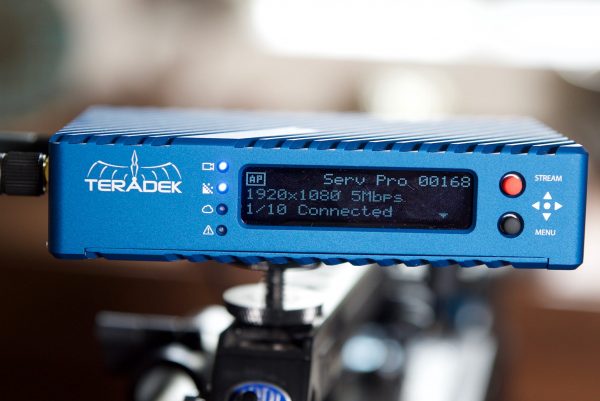
For small crews or solo shooters it doesn’t necessarily make a lot of sense to invest in expensive wireless transmission systems, particularly when you need to factor in the cost of having to purchase multiple receivers and monitors. You also don’t want to be wasting time restarting equipment and making sure everything is powered up and working properly. What if there was a way where everyone can see what you are doing by just using their own smartphone or tablet? Well there is, and it’s called the Teradek SERV Pro.
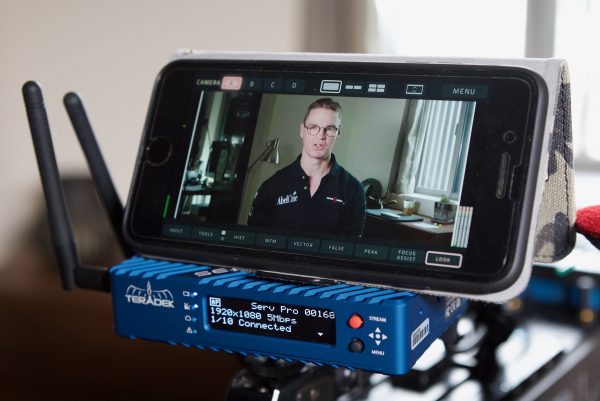
The Teradek SERV Pro is a really easy to use wireless transmission system that allows for up to 10 users to monitor your camera’s output on their iOS smartphone or tablet. The SERV Pro allows monitoring in 1080p with as little as two frames of latency (in perfect conditions), broadcasting over WiFi to Teradek’s client iOS app Vuer.
It doesn’t need to be complicated
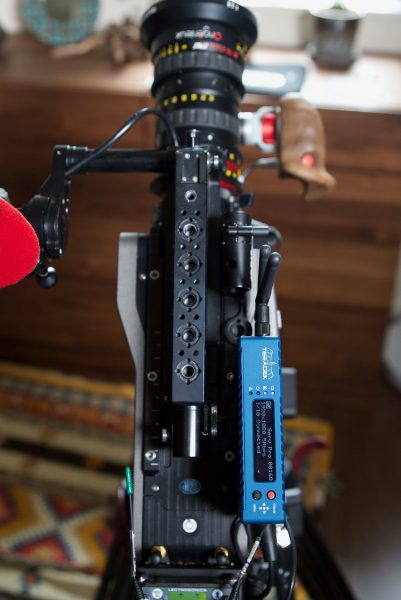
When you are working by yourself or in small crews you don’t want the equipment getting in the way. As soon as you add another link in the chain there are suddenly more things to have to worry about. Some wireless systems can be overly complex and take too much time to set up, luckily the SERV Pro is simple to use and operate, and you can be up and running quickly. All you need to do is turn the unit on, attach either an HDMI or SDI cable to your camera and then you are ready to go.
Vuer
For someone to monitor your camera feed they need to install the free Vuer iOS app and then connect to the WiFi network that the SERV Pro creates.
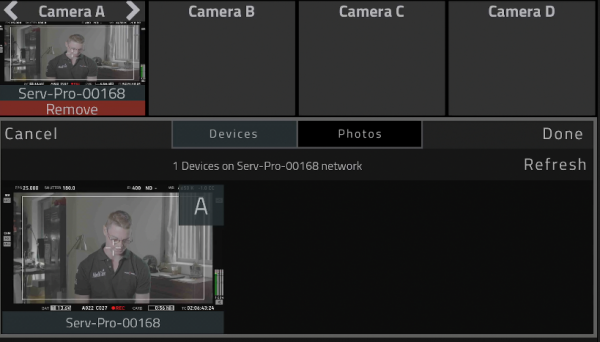
The Vuer app is really straightforward to use, but it’s also incredibly powerful. Not only does it allow you to monitor up to four independent cameras (though you would need four SERV Pros to do this), but there are also built-in monitoring tools and other features.
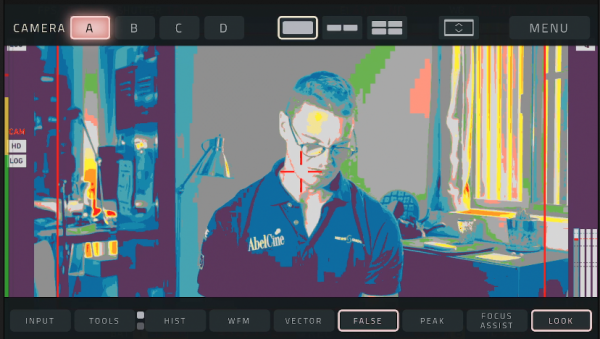
Vuer gives you access to histograms, waveforms, vectorscopes, focus peaking, focus assist, false colour and 3D LUTs, so everyone can see the picture as it was intended to be viewed. The App is also compatible with the Teradek Clip and Cube systems. Teradek are keen to stress that the system isn’t meant to replace a Bolt, but that this is a good way of being able to allow crew members who aren’t near a video village to see what’s going on on set.
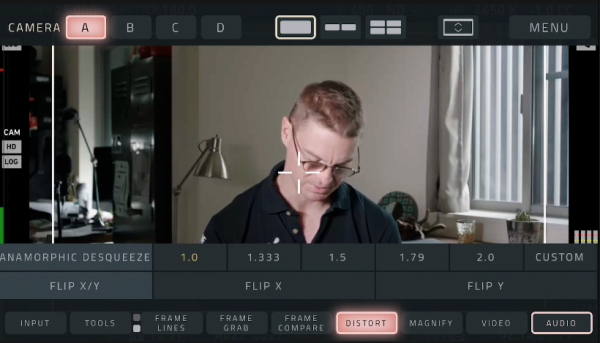
Other tools included are frame lines, frame grab, frame compare, distort (for anamorphic de-squeeze), magnify, and video and audio set up functions.
There are options to view a single camera, a two-up display and a four-up display. The nice thing about this is you don’t need to be using more than one camera to take advantage of the two-up or four-up display.
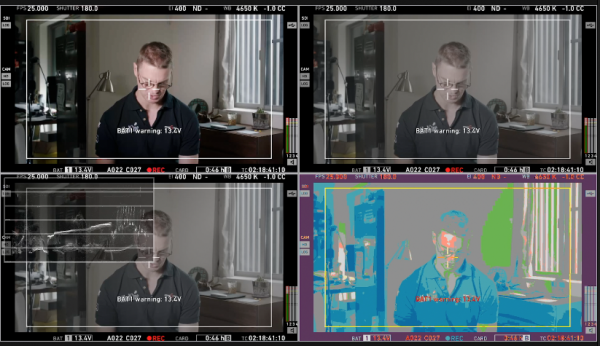
By adding the same camera to viewing inputs A, B, C and D you can then customise them with various monitoring tools and look at each one individually or all of them at once. As an example you can have a Log image on input A, the same image with a LUT on input B, the image with false colour on input C, and the image with a waveform on input D.
This is very powerful, and even for your own reference when you are shooting, you can quickly look at a variety of monitoring parameters individually or all at once on one screen. This is also nice for comparing what different LUTs will look like side by side.
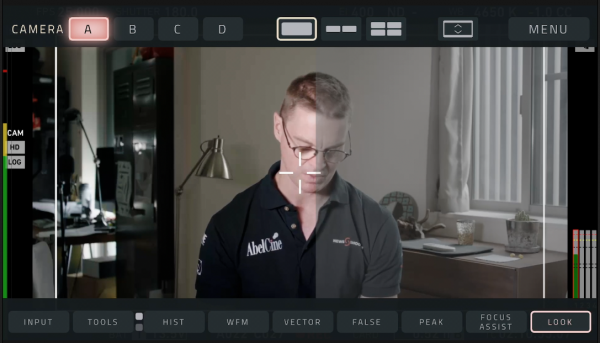
Another nice feature is you can do a split screen effect where you can view an image with a LUT on one half of the screen, and the Log image on the other.
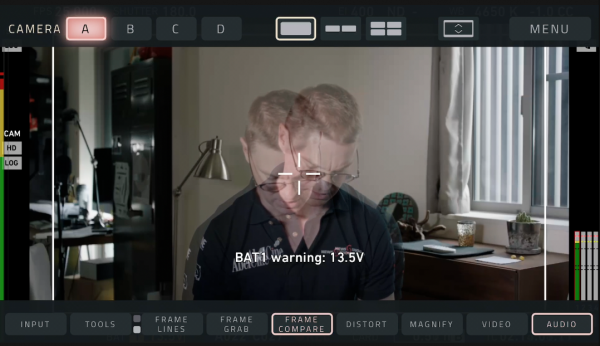
For continuity purposes there is a nice frame grab and frame compare function. You can simply frame grab a scene and then store it. You can then bring that up later on and compare it to another shot if you are trying to match exact framing etc.
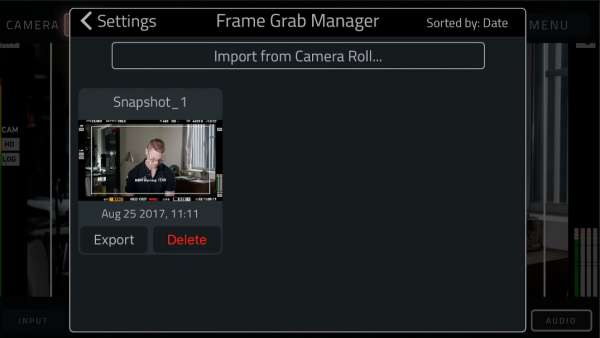
You can even export those frame grabs and send them to someone. Another option allows you to import photos in from your camera roll if your client wants you to match up a previous scene or location.
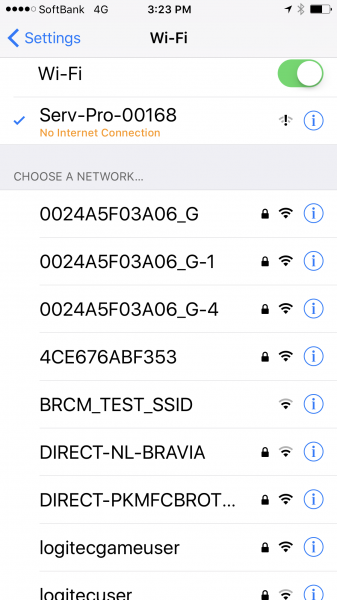
Streaming platforms are not supported directly through the SERV Pro, but via the Live:Air app. You can also use a regular WiFi access point to broadcast to the iOS clients.
Build quality
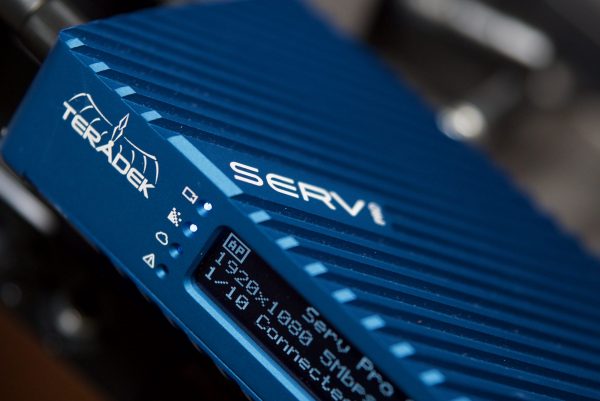
The SERV Pro is housed in a very well-built, anodised milled aluminium housing. It can be mounted horizontally or vertically using the 1/4″ 20 mounting holes. All the connectors are on the back of the chassis and I personally prefer to mount the SERV Pro so the connectors face downwards so they are out of the way and can’t be knocked out or damaged. The unit does generate quite a bit of heat so it’s a good idea to keep it away from the operator’s side of your camera.
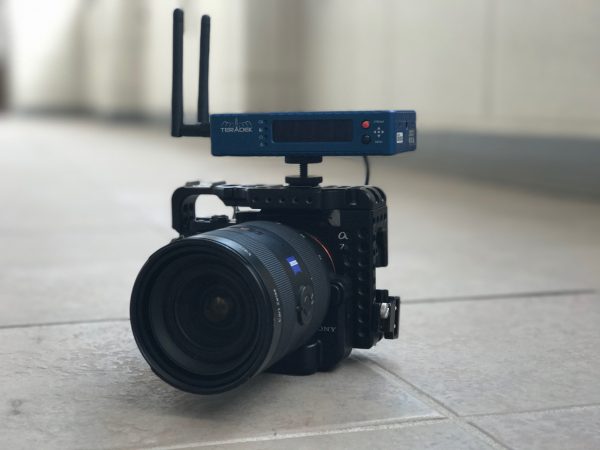
The SERV Pro isn’t exactly tiny, and you may find it takes up a lot of real estate if you are using a smaller camera.
Power
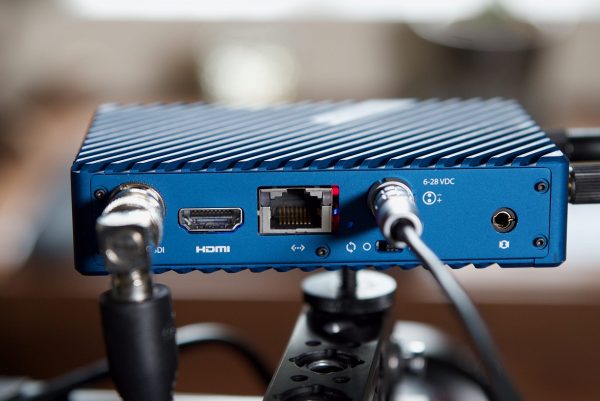
The SERV Pro can be powered from a range of 6-28V DC sources. The power input is a two-pin Lemo and there are various cables available (sold separately) depending on how you want to power it. I powered the unit I was testing via a two-pin to power tap cable so I could run the SERV Pro straight off my camera. If you’re using the SERV Pro with a smaller camera that doesn’t offer power outputs then you will have to come up with a powering solution that works for you.
Field use
It’s one thing to test out a piece of equipment in the comfort of your own home, but how does it fare out on location? The first thing I wanted to test was the range. The trouble with any device that uses WiFi is that the performance is going to totally depend on the environment you are working in. While it may work well at one location, it may not work well at another. I found this to be the case with the SERV Pro. From my experience it certainly doesn’t have the range of other more expensive systems like the Bolt.
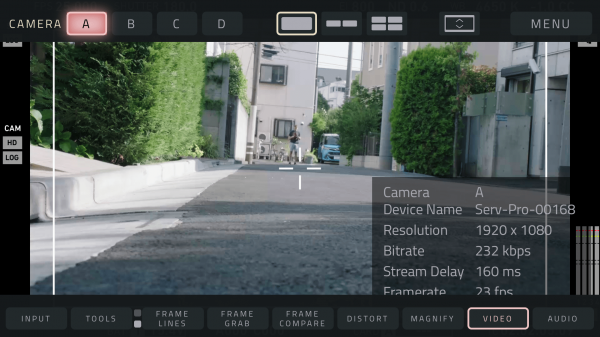
The SERV Pro works pretty well as long as whoever is viewing doesn’t walk too far away. Teradek claim the SERV Po has a range of up to 182m (600ft) in ideal WiFi (non congested) conditions. But, people have been reporting satisfactory use at up to around 61-76m (200-250 ft). From my experience using this system in Tokyo (not an uncongested WiFi area!) I found the effective range to be around 25-35m (82-115ft). Again the results you get are going to depend entirely on where you are using the system.
LINK
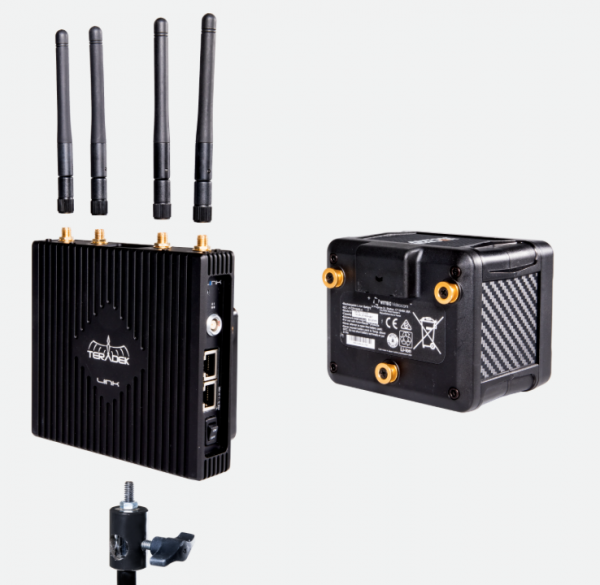
If you want to extend the range then Teradek also have another product called LINK that will work in conjunction with the SERV Pro. LINK is a WiFi access point with a 1000ft range. It features multiple mounting options and you can run it off either a Anton Bauer Gold mount or V-mount battery.
Clients love it
To be honest I wasn’t expecting to like the SERV Pro as much as I did. I mean wireless video transmission is wireless video transmission – it either works or it doesn’t. For me it’s the ease of use along with the Vuer app that makes this such a great product. The Vuer app is really well designed and thought out, and Teradek have incorporated a ton of extra features that allow you to turn the SERV Pro into way more than just a wireless video system.
My clients loved the fact that they could see everything on their own smartphone, and let’s face it, little touches like this are what helps you get repeat customers.
Being able to have up to 10 people connect to one SERV Pro is really nice as you don’t need to go to the added expense of buying multiple receivers, monitors, brackets and power supplies.
Teradek Bolt or Serv Pro – When to use each
The Teradek Bolt and Serv Pro are both wireless video monitoring devices, but their individual underlying technologies are quite different. The Bolt is a zero delay, lossless video transmission system that operates on the 5Ghz band. Since there is no discernible delay from transmitter to receiver, Bolt is best suited for focus pullers, long range transmission, or situations that require extremely detailed images.
Serv Pro, on the other hand, is WiFi based and uses H.264 compression to relay video over 2.4/5Ghz IP video networks. Since Serv Pro utilizes the 802.11 WiFi spec, any iOS device can pick up the feed with Teradek’s free VUER application, making it easier than ever for hair and makeup, clients, script supervisors, and more to see whats being shot without extra equipment. Since Serv Pro streams at a delay of about 2 to 4 frames, it is not ideal for focus pullers.
Ultimately, Bolt and Serv Pro can work side by side on set. Bolt is the best choice for critical camera operating, while Serv Pro is perfect for everyone else on set that doesn’t require specialized or bulky equipment to view what is being shot.
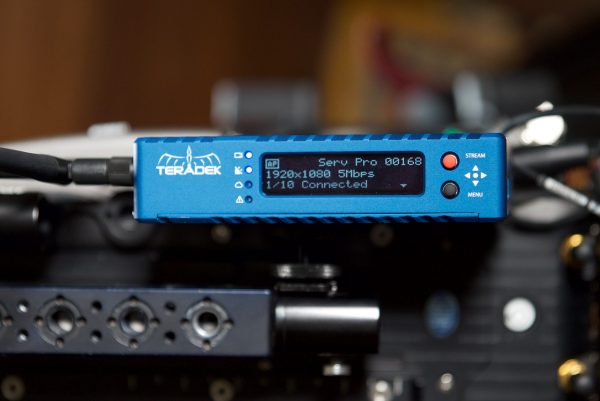
Teradek SERV Pro: Final thoughts, price and tech specs
For solo operators or people working in small crews, the SERV Pro makes more sense than spending a lot of money on traditional wireless video systems. If you don’t need to have material going through a proper video village and you just need the people you are working with or for, to be able to see a decent image on a smartphone or tablet then the SERV Pro is definitely the way to go.
Wireless video transmission systems aren’t cheap, but if you factor in how much money you would have to spend to allow 10 people to all be monitoring your images on their own monitor then the SERV Pro starts to look like a bargain. Bargain is a relative term in this case as the SERV Pro will still set you back $1,799.00US.
Supported Resolutions:
1080p 23.98/24/25/29.97/30/50/59.94/60*
1080i 50/59.94/60
1080PsF 23/24/25/29/30
720p 50/59.94/60
576i
480i
480p (for HDMI input only)
576p (for HDMI input only)
*Ingests 1080p50/59/60
Video Processing – Video Compression
H.264, Baseline, Main and High Profile
Supported Video Bitrate
250 Kbps to 15 Mbps*
*15 Mbps (wired), 10 Mbps (WiFi)
Supported Video Bitrate Details
5 Mbps
4 Mbps
3 Mbps
2.5 Mbps
1.5 Mbps
1 Mbps
750 Kbps
Supported Output Resolutions (Configured via Vuer app:)
1920×1080
1536×864
1280×720
960×540
480
260
270





